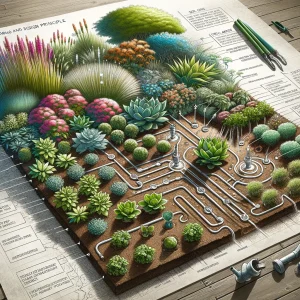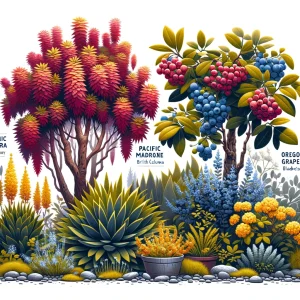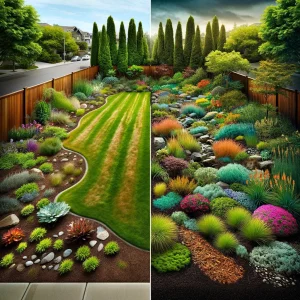In the picturesque landscapes of British Columbia, where water conservation is becoming increasingly essential, xeriscaping emerges as a gardening philosophy that saves water and creates stunning, low-maintenance gardens. Xeriscaping, the practice of designing landscapes to reduce or eliminate the need for irrigation, is an art that harmonizes with the environment. This beginner-friendly guide will introduce you to the principles of xeriscaping, recommend drought-tolerant plants suited for British Columbia, and provide design strategies and practical advice for embarking on your water-wise gardening journey.

Why Xeriscape?
With British Columbia’s unique climate challenges, from dry summers to water restrictions, xeriscaping offers an environmentally friendly solution. By comparing traditional gardening, which often requires extensive irrigation and maintenance, xeriscaping stands out for its sustainability, reducing water use by up to 50-75%.

Principles of Xeriscaping
Xeriscaping revolves around seven core principles:
- Planning and Design: Tailor your garden layout to include plants with similar water needs to maximize efficiency.
- Soil Analysis and Improvement: Enhance your soil to retain moisture and provide the necessary nutrients for your plants.
- Efficient Irrigation: Utilize drip irrigation or soaker hoses to deliver water directly to the plant roots, reducing waste.
- Appropriate Plant Selection: Opt for native or drought-tolerant plants that thrive in British Columbia’s climate.
- Mulching: Apply organic mulch to minimize evaporation, control soil temperature, and reduce weed growth.
- Practical Turf Areas: Limit the use of grass to functional areas, as it typically requires more water.
- Maintenance: Regular maintenance, such as weeding and pruning, ensures the health and longevity of your xeriscape.

Drought-Tolerant Plants for British Columbia
- Pacific Madrone (Arbutus menziesii): A majestic native tree with beautiful red bark and evergreen leaves.
- Oregon Grape (Mahonia aquifolium): Offers year-round interest with its yellow flowers and blueberries.
- Snowberry (Symphoricarpos albus): A hardy shrub with charming white berries, perfect for attracting birds.

Design Strategies
Creating an attractive xeriscape can be as simple or elaborate as you wish. Consider incorporating rock gardens using local stones or designing wildlife-friendly spaces with plants that attract native birds and pollinators. Incorporating paths and seating areas can also enhance the beauty and functionality of your garden.

Soil, Mulching, and Maintenance
Begin with a soil test to understand your garden’s needs. Adding organic matter can improve soil structure and water retention. Apply a layer of mulch around your plants to conserve moisture and reduce weeds. Regular maintenance, such as mulching and pruning, keeps your garden healthy and attractive.

Local Success Stories and Resources
Be inspired by local success stories, like transforming a traditional lawn into a vibrant xeriscape at the VanDusen Botanical Garden. For supplies and plant recommendations, visit local nurseries or the Native Plants Society of British Columbia.

Converting Your Garden
Starting small, with a single flower bed, can make the transition manageable. Gradually replace high-water-use plants with drought-tolerant varieties and incorporate mulching and efficient irrigation practices.
Seasonal Guidance
The best time to start xeriscaping in British Columbia is in the spring or fall, allowing plants to establish before the dry summer months. Planning your garden in the winter can give you a head start.
Xeriscaping in British Columbia is not just about saving water; it’s about creating a sustainable and beautiful garden that thrives in our climate. You can transform any space into a water-wise oasis with the right plants, design strategies, and care.